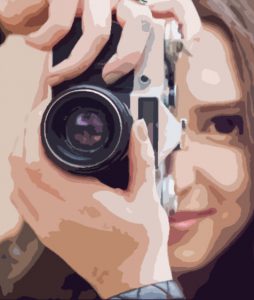 Capturing a moment and freezing time has always been fascinating for mankind. It always required a skill to turn a moment into a lasting image. Cave drawings are the first known attempts to do just that. Over the millennia many great, and not so great, artist practiced this skill.
Capturing a moment and freezing time has always been fascinating for mankind. It always required a skill to turn a moment into a lasting image. Cave drawings are the first known attempts to do just that. Over the millennia many great, and not so great, artist practiced this skill.
With the invention of the camera and film the game changed. It was suddenly much easier to trap the moment and make it last. The first photographers still had to be very skilled because you could not go to a store and buy a role of film – the first photographers made their own plates for their box cameras.
But by the 50s and 60s photography had become so easy that every American tourist traveling the world took his or her camera along. And in the recent years the prevalence of digital cameras has brought picture-taking everywhere.
The main areas in which photography is used today are snapping memory shots, documenting events and facts, and artistic expression.
Probably the most pictures take are from the first category – capturing memories. Here is the camera, especially the latest very small models, which can go everywhere and that fit into your shirt pocket. As there is, beside the initial cost for the camera, no cost involved in photo-taking, many, many photos are taken, many of which might only be looked at once before they are forgotten on a hard drive or deleted.
The second use of the camera for the documentation of events, facts and objects requires a much bigger skill level of the photographer if he really wants to create an image that tells a story or shows a situation. Point and click does not work any more. The photographer has to have the ability to isolate something specific from a sea of distraction. A wide-angle shot where, way in the background, you see the dog biting the kid while there are more prevalent objects in the foreground will not document the dog attack.
Artistic use of the camera requires a total synergy of camera and photographer. Just like the painter knows exactly how the brush will apply the paint to the canvas, so does the artistic photographer know every nuance of his tool of the trade – the camera. But just as a great painter will paint a great picture with an expensive brush or a cheap pencil, so is the great photographer able to even use a cheap camera to take great pictures.
The camera, in all three fields of application, has opened up the entry into the respective area to nearly everybody. But it still remains true that to create great pictures, great skills are required. Today’s advertisement tries to make it appear that if you spend bundles of money to purchase the latest and greatest camera, you will automatically take perfect pictures. This is certainly not the case as the photographer and not the camera takes the pictures. Lowering the bar to enter the field allows many more people to get started but only the person who sticks with it and trains himself in the art will obtain stunning results.
